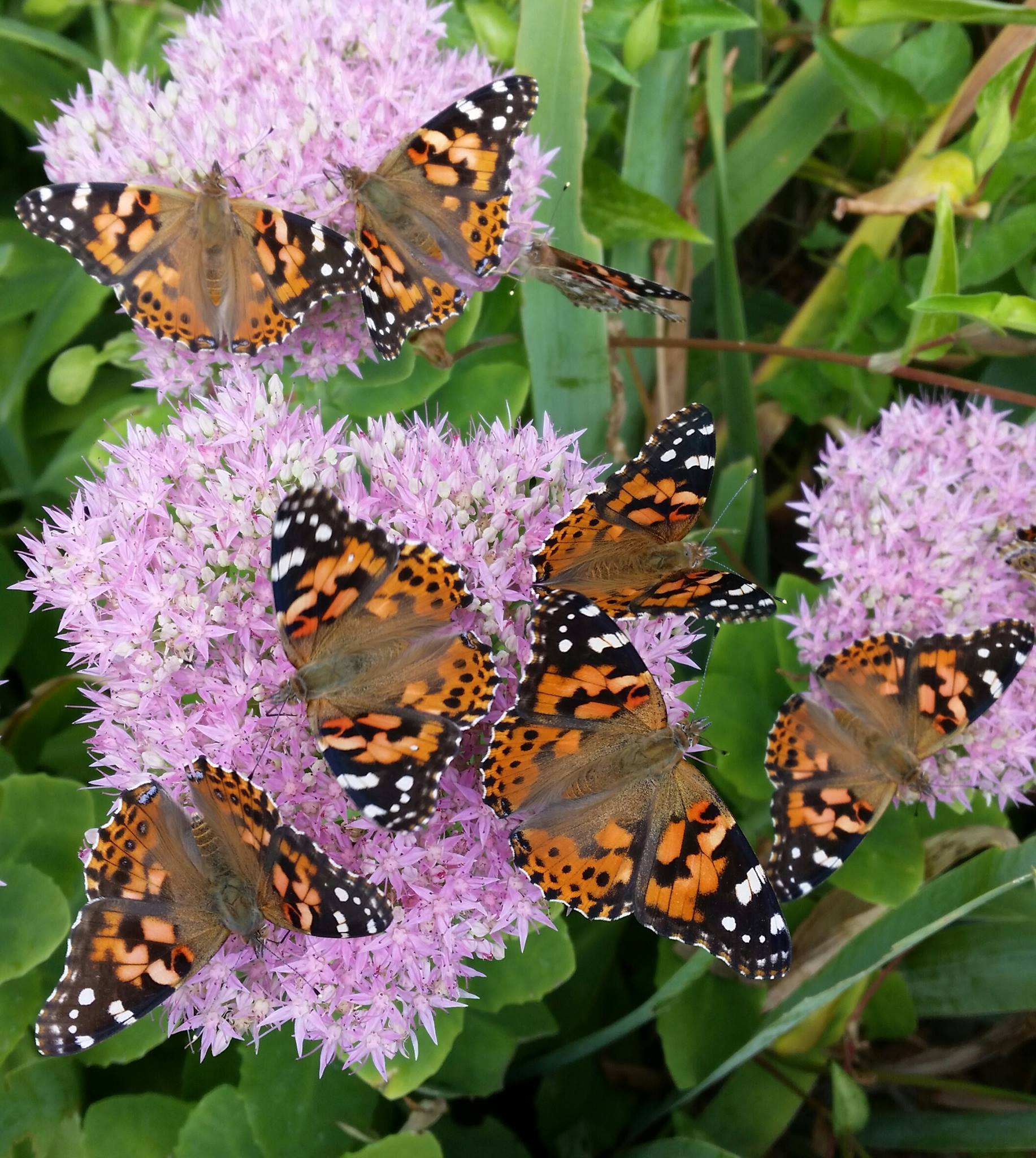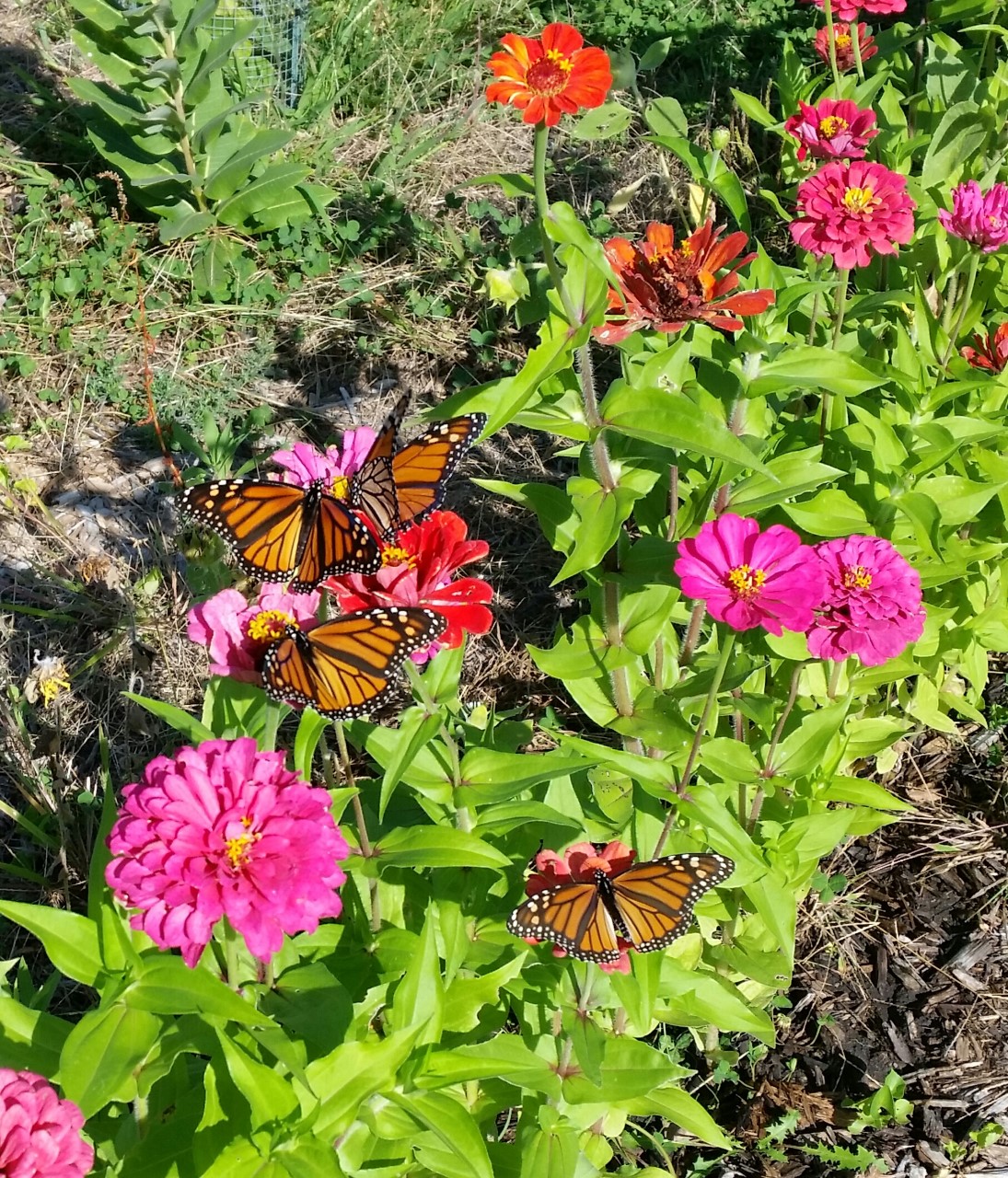I often get asked “What perennials should I plant for butterflies?” The plant selection can be overwhelming especially if you have a small space. Here are a few suggestions. I have included pictures I have taken over the past 5 years of the plants and the butterflies.
MJ Frogge
Monarch on aster, Comma on common milkweed, Painted Lady on tall sedum, Monarch on Liatris, Tiger swallowtail on Monarda, Buckeye on Thyme, Painted lady on purple coneflower, Border patch on Rudbeckia, Crescent on butterfly milkweed, Monarch on swamp milkweed, Grey hairstreak on mint, Painted lady on goldenrod, Border patch on sawtooth sunflower and Black swallowtail on tall thistle.


























